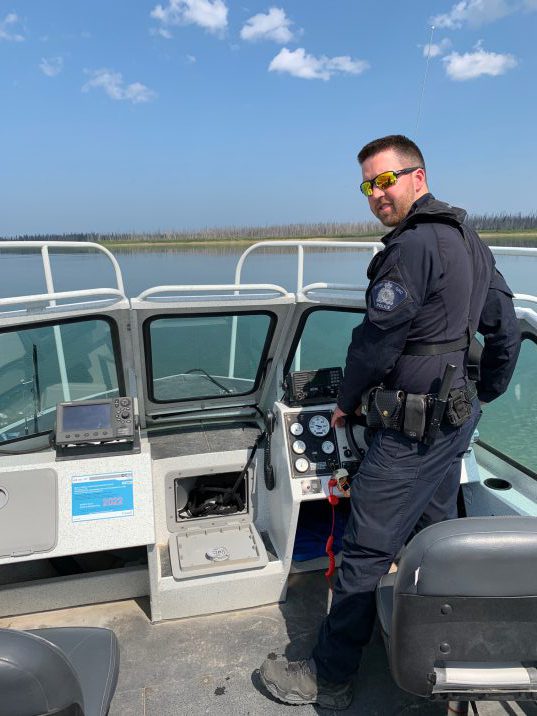South District RCMP recently wrapped up the first edition of a boating safety tour along the MacKenzie River. From July 15th to 19th, Special Constable Jordan Groenewegen of the Hay River detachment with the assistance of local members, visited Fort Providence, Jean Marie River, Fort Simpson and Wrigley aboard the Hay River RCMP Jet Boat.
Along the five-day journey, the police officers spoke regarding water and boat safety to over 50 attendees, including children.
S/Cst Groenewegen stated that the RCMP explained, among other things, how to use a signalling device, the different types of lifejackets and the importance of carrying an emergency kit when going on the water.
“We spoke not only of safety on the water but also around water. Like telling kids to tell someone when they are going to play next to the river. Or tell the children to remind the elders they also need to wear a safety vest. This trip was a positive way to get out there and to engage with local people.”
A big reason the RCMP felt it necessary to launch the safety tour was in part due to these facts from the Lifesaving Society:
- The age groups with the highest risk of drowning are young adults 20-24 years of age, baby boomers 50-64 years of age and seniors over 65.
- Drowning is the 2nd leading cause of unintentional injury deaths among Canadian children under 10 year of age.
- Not wearing a lifejacket or PFD was a factor in 84% of boating deaths.
- Always swim with a buddy: 55% of 5-14-year-olds drowned when alone or with other minors.
- Alcohol was a factor in 36% of all boating fatalities.
In a 2014 study published by the Canadian Red Cross Society, rates of boating-related fatalities in the NWT were much higher than the national average. Between 1991 and 2010, the average rate of boating fatality was 9.6 persons per 100,000 in the NWT, compared to the Canadian rate of 0.6 persons per 100,000.




